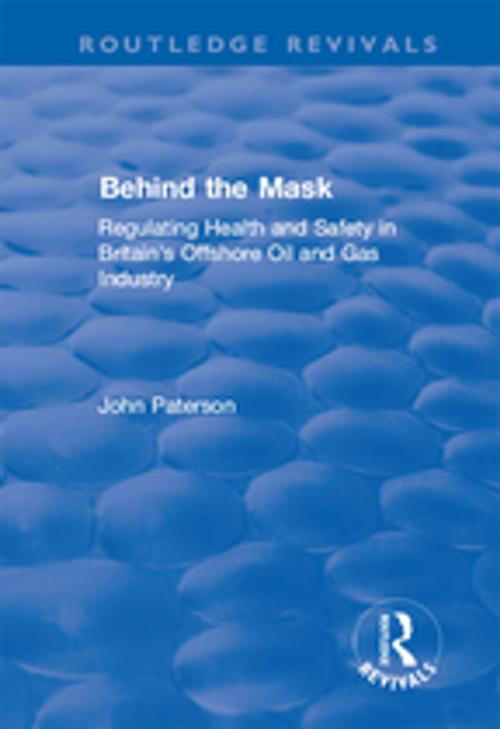Behind the Mask
Regulating Health and Safety in Britain's Offshore Oil and Gas Industry
Nonfiction, Reference & Language, Law| Author: | John Paterson | ISBN: | 9781351735971 |
| Publisher: | Taylor and Francis | Publication: | November 1, 2017 |
| Imprint: | Routledge | Language: | English |
| Author: | John Paterson |
| ISBN: | 9781351735971 |
| Publisher: | Taylor and Francis |
| Publication: | November 1, 2017 |
| Imprint: | Routledge |
| Language: | English |
This title was first published n 2000: The most recent developments in occupational health and safety regulation in the UK’s offshore oil industry represent a departure from traditional legal forms. But how should they best be understood and what advantages do they offer over the previous regulatory approaches? Informed by autopoiesis theory, this study takes seriously the notion of an empirical field constituted by diverse communicative systems and thus traces the development of the industry along a series of dimensions including those of management and engineering as well as of politics and regulation. Adapting cognitive mapping, the book offers graphic demonstrations of the resultant constructive misunderstandings of regulatory and scientific signals and accordingly an alternative perspective on the nature of risk. The latest regulatory developments are shown to possess the potential to address these issues but only insofar as they are understood as distinct from previous legal forms and in particular as an example of reflexive law.
This title was first published n 2000: The most recent developments in occupational health and safety regulation in the UK’s offshore oil industry represent a departure from traditional legal forms. But how should they best be understood and what advantages do they offer over the previous regulatory approaches? Informed by autopoiesis theory, this study takes seriously the notion of an empirical field constituted by diverse communicative systems and thus traces the development of the industry along a series of dimensions including those of management and engineering as well as of politics and regulation. Adapting cognitive mapping, the book offers graphic demonstrations of the resultant constructive misunderstandings of regulatory and scientific signals and accordingly an alternative perspective on the nature of risk. The latest regulatory developments are shown to possess the potential to address these issues but only insofar as they are understood as distinct from previous legal forms and in particular as an example of reflexive law.















